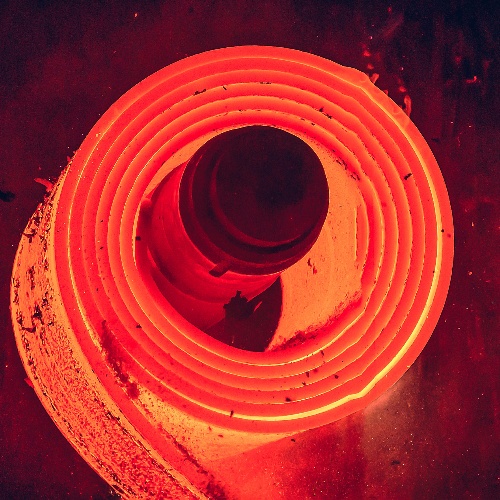Introduction:
Steel plays a pivotal role in construction, automotive, and manufacturing industries. Among its many forms, hot rolled and cold rolled steel are two primary types widely used. Both processes affect the steel's strength, surface quality, and shape. However, choosing between the two depends on specific applications. In this article, we will explore the differences, advantages, and key aspects of hot and cold rolled steel to help you make informed decisions.

What Is the Meaning of Hot Rolled Steel?
Hot rolled steel refers to steel that is processed at high temperatures, typically above 1.700°F (927°C), which is above steel's recrystallization temperature. This allows the steel to be easily shaped and formed. Here are some characteristics of hot rolled steel:
Cost-effective: Since it's processed without delays, the production cost is lower.
Surface finish: The surface is often rougher due to scaling from the cooling process.
Applications: Commonly used in construction, rail tracks, and other projects where precise shapes and surface finish aren’t a priority.
Example:
Steel beams used in large construction projects are usually made from hot rolled steel, where strength and cost-efficiency outweigh cosmetic concerns.
What Is the Meaning of Cold Rolled Steel?
Cold rolled steel is essentially hot rolled steel that undergoes further processing in a cold reduction mill. This process occurs at room temperature and improves its strength and surface finish. Here are its key traits:
Smoother finish: Due to cold processing, the surface is smoother and free from scale.
Better dimensional accuracy: The final product has tighter tolerances.
Applications: Ideal for products requiring precise dimensions, such as home appliances and automotive parts.
Case Study:
A manufacturer of precision-engineered car parts prefers cold rolled steel because of its clean finish and tight dimensional tolerances, allowing for high-quality, consistent parts.
Which Is Better, Cold Rolled or Hot Rolled Steel?
The "better" choice depends on the intended application. Cold rolled steel excels in projects where aesthetics, precision, and surface quality matter. However, hot rolled steel is more cost-effective and suitable for applications that require strength over precision.
Consider these factors:
Budget: Hot rolled steel is cheaper.
Surface quality: Cold rolled is smoother and more polished.
Strength: Cold rolled steel is stronger due to strain hardening.
How to Tell if Steel Is Hot Rolled or Cold Rolled?
Distinguishing between hot and cold rolled steel can be done by examining both the surface and tolerance of the material. Here are some tips:
Surface texture: Hot rolled steel will have a rough, scaly surface, while cold rolled steel is smooth and shiny.
Dimensional accuracy: Cold rolled steel tends to be more precise, with sharper edges compared to the slightly rounded corners of hot rolled steel.
Thickness: Hot rolled steel is typically thicker and larger, while cold rolled steel is more uniform in size.
Conclusion: Choosing the Right Steel for Your Needs
Both hot rolled and cold rolled steel have their places in manufacturing and construction. If you need steel for a project requiring tight tolerances and a smooth finish, cold rolled steel is ideal. On the other hand, hot rolled steel is perfect for applications where cost efficiency and strength are more important than appearance. By understanding their differences, you can select the right material to meet your specific project requirements.

